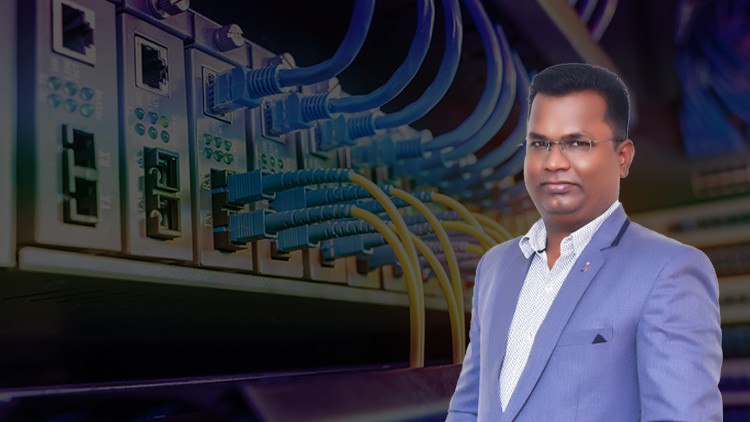To become Network L1/L2 – Engineer, Learn how to Install, Configure, Basic IPv4/6 Networks. From Beginner to Expert.
Overview
The Implementing and Administering Cisco Solutions (CCNA) v1.0 course gives you a broad range of fundamental knowledge for all IT careers. Through a combination of lecture, hands-on labs, and self-study, you will learn how to install, operate, configure, and verify basic IPv4 and IPv6 networks. The course covers configuring network components such as switches, routers, and wireless LAN controllers; managing network devices; and identifying basic security threats. The course also gives you a foundation in network programmability, automation, and software-defined networking.
This course helps you prepare to take the 200-301 Cisco Certified Network Associate (CCNA) exam. By passing this one exam, you earn CCNA certification.
Course Objectives
After taking this course, you should be able to:
-
Identify the components of a computer network and describe their basic characteristics.
-
Understand the model of host-to-host communication.
-
Describe the features and functions of the Cisco Internetwork Operating System (IOS)software.
-
Describe LANs and the role of switches within LANs.
-
Describe Ethernet as the network access layer of TCP/IP and describe the operation of switches.
-
Install a switch and perform the initial configuration.
-
Describe the TCP/IP Internet layer, IPv4, its addressing scheme, and subnetting.
-
Describe the TCP/IP Transport layer and Application layer.
-
Explore functions of routing.
-
Implement basic configuration on a Cisco router.
-
Explain host-to-host communications across switches and routers.
-
Identify and resolve common switched network issues and common problems associated with IPv4 addressing.
-
Describe IPv6 main features and addresses, and configure and verify basic IPv6connectivity.
-
Describe the operation, benefits, and limitations of static routing.
-
Describe, implement, and verify Virtual Local Area Networks (VLANs) and trunks.
-
Describe the application and configuration of inter-VLAN routing.
-
Explain the basics of dynamic routing protocols and describe components and terms of Open Shortest Path First (OSPF).
-
Explain how Spanning Tree Protocol (STP) and Rapid Spanning Tree Protocol (RSTP)work.
-
Configure link aggregation using Ether Channel.
-
Describe the purpose of Layer 3 redundancy protocols.
-
Describe basic WAN and VPN concepts.
-
Describe the operation of Access Control Lists (ACLs) and their applications in the network.
-
Configure Internet access using Dynamic Host Configuration Protocol (DHCP) clients and explain and configure Network Address Translation (NAT) on Cisco routers.
-
Describe basic Quality of Service (QoS)concepts.
-
Describe the concepts of wireless networks, which types of wireless networks can be built, and how to use Wireless LAN Controllers(WLCs).
-
Describe network and device architectures and introduce virtualization.
-
Introduce the concept of network programmability and Software-Defined Networking (SDN) and describe smart network management solutions such as Cisco DNA Center, Software-Defined Access (SD-Access), and Software-Defined Wide Area Network(SD-WAN).
-
Configure basic IOS system monitoring tools.
-
Describe the management of Cisco devices.
-
Describe the current security threat landscape.
-
Describe threat defence technologies.
-
Implement a basic security configuration of the device management plane.
-
Implement basic steps to harden network devices.
Course Details
- Language: #English
- Students: 3359
- Rating: 4.94 / 5.0
- Reviews: 50
- Category: #IT_and_Software
- Published: 2021-08-01 08:58:33 UTC
- Price: €19.99
- Instructor: | | ILANCHEZHIAN. K 87,789 Students | |
- Content: 27 total hours
- Articles: 0
- Downloadable Resources: 0
Coupon Details
- Coupon Code: FREEOFFER
- Expire Time: 2024-01-30 11:31:00 UTC


![Dart Programming Language And OOP For Beginner [In Arabic]](https://punylk.me/wp-content/uploads/2024/01/image-3111-150x150.jpg)
